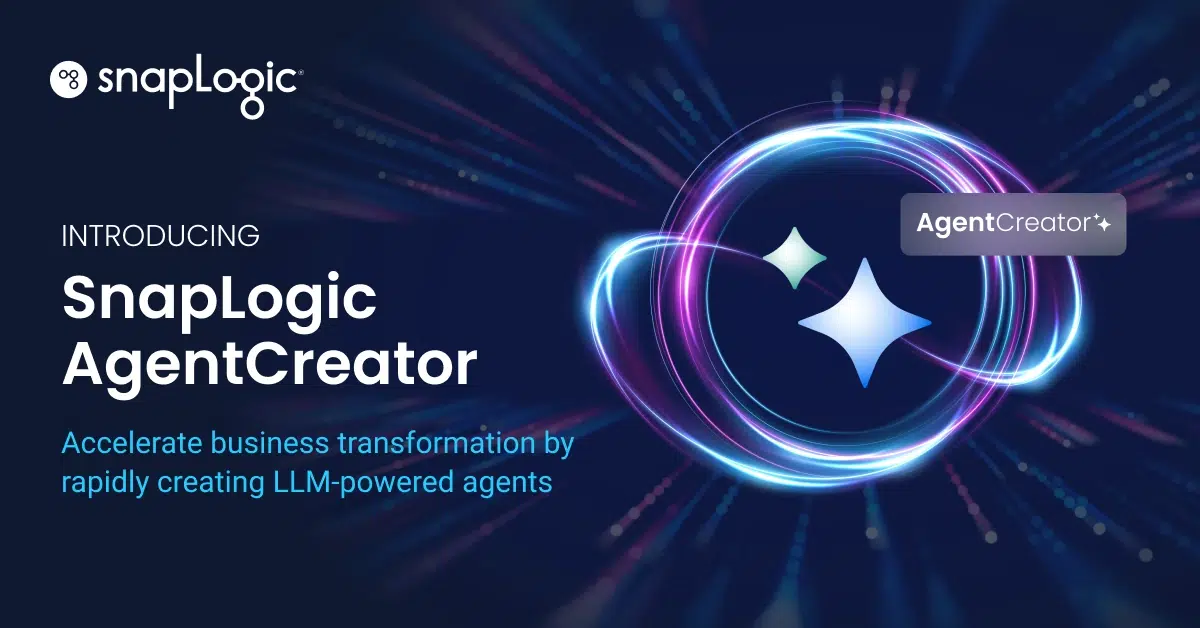There are a few things that give me a sense of satisfaction as a CMO. Hitting pipeline targets for sure. Launching a new brand campaign successfully, absolutely. Today I have that same sense of satisfaction announcing that SnapLogic has once again been recognized as a Visionary in the latest Gartner Data Integration Magic Quadrant, moving up and to the right in the quadrant (that’s a good thing BTW!). This recognition highlights our continued commitment to innovation and excellence in helping our customers connect their company with a composable, data-driven, and agentic vision.
Our vision for AI in the enterprise: Generative Integration
At SnapLogic, we are dedicated to pushing the boundaries of what’s possible with AI. The SnapLogic Platform for Generative Integration is designed to meet the diverse needs of our 2,450+ customers across North America and EMEA, spanning industries such as technology, banking, retail, manufacturing, education, and healthcare. Nothing brings this commitment more into focus than our recent launch of AgentCreator, but today is about the Data Integration MQ.
Strengths that set us apart
- Clear vision for GenAI: Our GenAI integration solution, SnapGPT, empowers users to generate, analyze, and describe data pipelines using natural language. With our AgentCreator, users can build sophisticated GenAI applications, assistants, and agents by leveraging leading LLMs and prompt generation capabilities. Our native JSON-streaming architecture also supports processing large document volumes, which is essential for RAG implementations.
- Business user alignment: We prioritize the needs of business users with no-code data ingestion through AutoSync and no-code data wrangling via AutoPrep. Our AutoSuggest feature leverages AI to recommend the next best Snap (prebuilt connector) during data pipeline design. Additionally, our revamped product packaging offers tailored editions for both business and enterprise users.
- Enhanced multi-cloud support: SnapLogic’s iPaaS allows the data plane to reside on-premises or in any major public cloud, centralizing integration on a unified platform. We combine data and application/API integration patterns within the same platform via Snaps. Our cloud-native architecture has received high satisfaction ratings on Gartner Peer Insights.
We’re always pushing for more
While we are proud of our achievements, our commitment to innovate with and for our customers remains strong and we are always pushing for me. Here’s what to expect from us in the coming weeks and months:
- Job monitoring and debugging: We are working on providing clearer error messages and an improved user experience for handling exceptions and restarting failed jobs, especially during complex data transformations.
- Data governance and metadata support: We are enhancing our data governance and metadata management capabilities. Integrations with third-party vendors like Collibra and Monte Carlo are imminent, and we are working to offer more granular pipeline lineage and observability.
- Market visibility: We are always working hard to grow our presence. Whilst this report focuses on the Data Integration market, I am happy to report we continue to expand our presence in the iPaaS market, we have a new exciting release with our APIM capabilities, and we are at the forefront of Agentic AI in integration. This is the true power of the SnapLogic platform where you can solve problems in four different technology markets, with one secure and scalable platform. And there’s more to come!
Looking ahead
So they say satisfaction is never guaranteed in life, but this position in the MQ feels pretty good today. As we continue to innovate and expand our offerings, we remain committed to providing our customers with cutting-edge solutions that meet their evolving needs.
Check out the full report, and let me know if you have any questions on where we are today and where we are going! We are excited about the future of generative integration and the role SnapLogic will play in shaping it. Thank you for your continued support and trust in SnapLogic.










